29 Fascinating Places to See Cuba Itinerary
By Regina Ang
Cuba was high on our list of places to go. We wanted to see the island and understand the history of Cuba. When we saw a LGBTQ tour group trip to Cuba, we jumped on it. The opportunity to meet and speak to LGBTQ activists in Cuba was a unique opportunity. Below is a report on 29 fascinating places to see and Cuba Itinerary.
We started in Santa Clara, went to Matanzas and ended our trip in Havana. There is much more of Cuba to see and we hope to go back.
Santa Clara-Our Cuba Itinerary
We flew into a very muggy Santa Clara. We entered a single level concrete building and proceeded to immigration. The Cuban officer asked for our reason for traveling to Cuba and took our picture. He then stamped our passport and returned half of the visa form. Matt Smith, from Detours with Matt, picked us up in a van. In 30 minutes, we were in Santa Clara. The Cuba adventure had begun.
Hostal La Coti
We checked into Hostal La Coti (Rafael Trista #165, province Villa Clara, Santa Clara), a casa particulares a few blocks from the square. Our private room with a large bathroom was on the roof with a private terrace. The room was clean with a small couch and a double bed. There were cold bottles of water and soda in the refrigerator ($1.50). We were very happy to see air conditioning in the room.
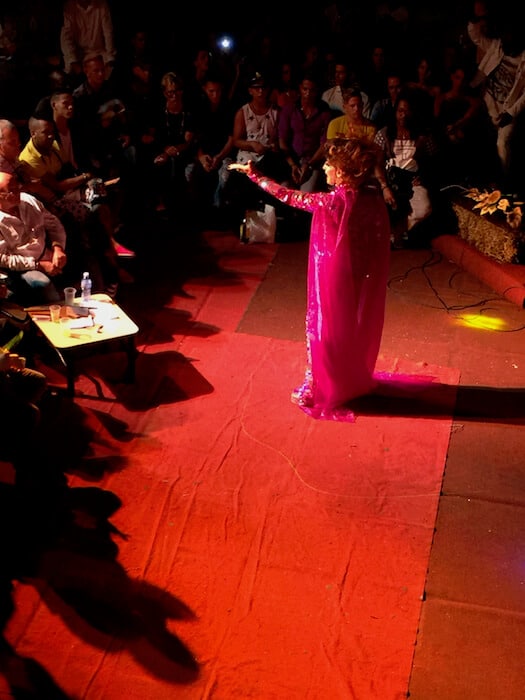
Drag Show at El Mejunje
There is a welcoming open courtyard in the middle of the house with a mermaid and dolphin fountain. The house itself is somewhat like a museum with dolls, fans, art and furniture. Homero, the owner, did not speak any English,but we figured out how to communicate. He made breakfast with Cuban coffee – strong and sweet without milk. Breakfast included fresh fruit, bread, eggs and fruit juice.
WiFi in Cuba
Matt, our host and guide, had given us a wifi card each upon arrival. The government controls WiFi in Cuba. Hotels and private homes do not have Wifi. It is only available in public parks. There have been some recent improvements in speeed and access, but it is still slow. You can tell where the strongest Wifi signal is at a park because you’ll see everyone huddling over their electronics near that spot. There is also often a long line for buying a WiFi card.
El Fraile
We went to lunch at El Fraile cafeteria, a privately owned restaurant not far from the square where we ate chicken, ropa vieja, yuccas, pork, beans and rice dishes. There we met the rest of our travel companions for the rest of the week: Richard, our Cuban guide, Paul, Robert, Roland, Scott, Jack, Carlos and Shawn, the organizer of the trip. As you may have figured out, we were two women traveling with 9 men. That proved to be challenging later on in the trip.
A group of seniors then came by to perform for us – beautiful Cuban songs from the past.
Che Guevara mausoleum
After the delicious lunch, we took a motorcycle taxi to the Che Guevara mausoleum. The Battle of Santa Clara, led by Che, was a decisive turning point in the war that deposed General Fulgencio Batista. During the battle, Che and his men derailed a train full of Cuban soldiers.
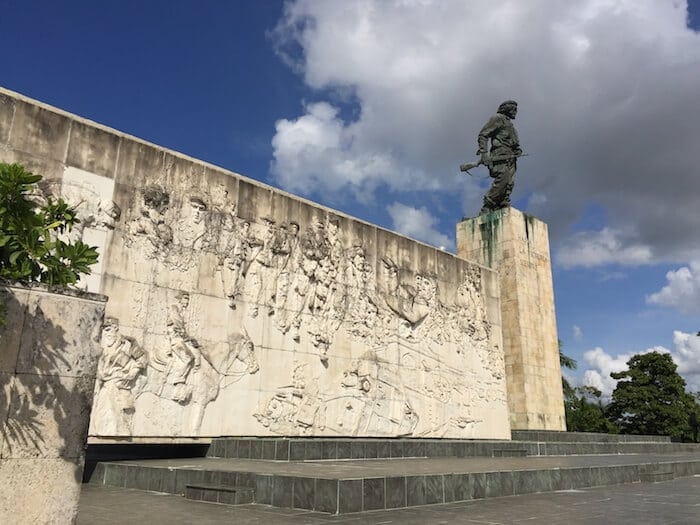
Che Guevara Memorial
That action helped to win the Battle of Santa Clara. We went to see the derailed trains in another part of Santa Clara.The expansive mausoleum area features a huge statue of Che and several sculptural monument complexes that depicted the battle.
Sue went into the mausoleum and saw the ever lasting flame that burns in honor of Che Guevara and his soldiers. Che was captured and tortured to death while trying to lead a revolution in Bolivia with 18 of his men. All of their remains were brought back from Bolivia. The guns, uniforms and photographs in the Museum tell the story of the Cuban revolution.
The monument was impressive. There was also a cemetery at the back of the monument which honored the war heroes who died during the revolution.
Revolucion Café-Museum
During our walk through Santa Clara, we happened upon Revolucion Café-Museum (313 Independence Street, Santa Clara, 30 meters from the derailed train site). We stopped for a midday break and iced coffee ($0.50 for espresso). The café also served sandwiches, juices and cocktails.
The Cafe is really a museum. It has an extensive collection of Che memorabilia, documents and pictures of Raul and Fidel Castro on display. There were uniform, caps, flags and antique artifacts. There was an old working refrigerator, an antique still-working cash register and typewriter mounted on the wall. Revolucion’s owner Mariano Gil de Vena originally hailed from Palancia, Spain. He also collected European artwork from the earlier centuries.
El Mejunje
Just before dinnertime, we had our first people-to-people meeting with the founder of El Mejunje ([email protected]). Ramon, Maria (director of programs and evening bouncer) and resident intellectual and writer, Alexei spoke with us for 2 hours. They shared many details about the experince of being LGBTQ in Cuba and the history of El Mejunje. Maria shared her experience of being presented with a membership in the communist party. As an out lesbian, she never expected the honor.
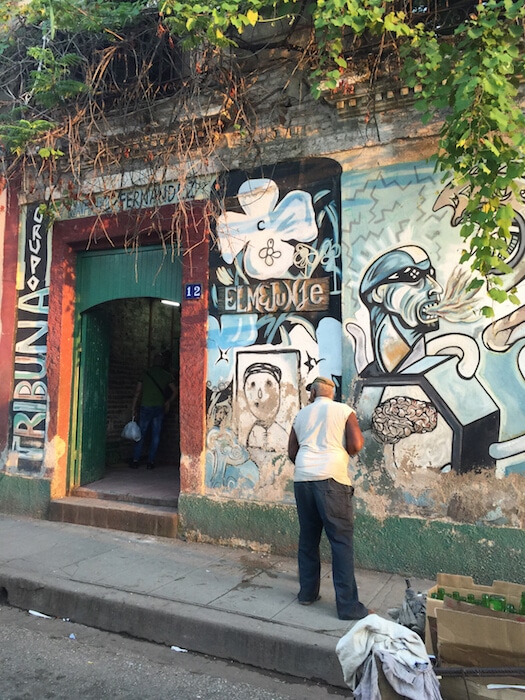
Cuba Itinerary El Mejunje
Established in 1991, El Munjunje is one of the official gay and lesbian supported organizations in Cuba. As an offical LGBTQ organization, El Mejunje jas recived some support from the government in the form of the building that they occupy. All of the operating expenses needed to be raised by the staff.
It is very inclusive and open to everyone–gay, straight, transgender and anyone else, regardless of economic situation, who wants to be there. We returned in the evening to El Mejunje for a drag show. The place was full of people and the show was great.
Dinner was at the Restaurante Cafetaria Sabore Arte, a local family restaurant when we had seafood appetizers, Cuban dishes including beans and rice, plantain chips and drinks.
Matanzas
Matanzas is the birthplace of music and the dance tradition of danzon and rumba.
Alberto Albreu Arcea, a local professor of sociology spoke with us about the history of the gay community in Cuba and LGBT activism. We met him at the Casa de la Memoria Escenica (Museum of Memorable Scenery). It was a very interesting dialogue. He outlined the
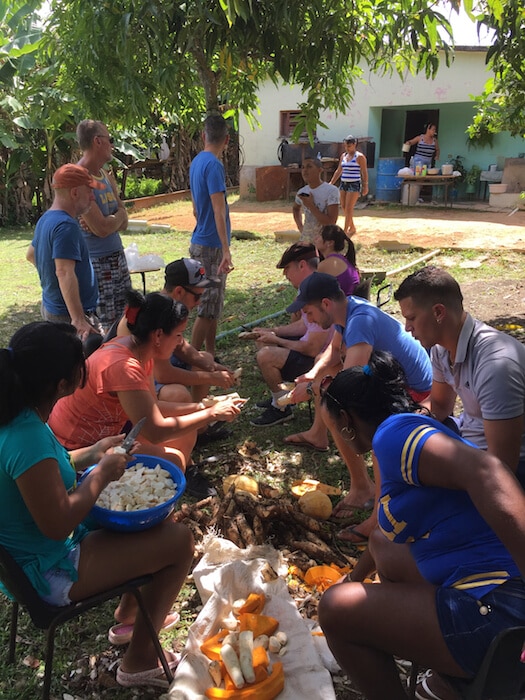
Cuba Itinerary Cooking in Matanzas with Dayron, the leader of TraBaSon
differences between the government sponsored organizations and the more independent ones.
After lunch, we drove to the Limonar municipality in the province of Matanzas to the home of Dayron, a local musician. We helped Dayron’s family prepare lunch.
Everyone–men, women, grandparents and us–chopped vegetables in the backyard. It all went into a huge pot over and open fire. The stew of pork and yucca was one of the most amazing meals we had in Cuba!
Dayron and his family played music and sang. We took a walk into ‘town’ where we drank rum at Jorge’s bar and patronized a local guarapera serving freshly squeezed sugar cane juice.
Bistro Kuba-A Lesbian Owned Bar
We had dinner at Bistro Kuba bar-cafe, a lesbian owned bar with salads, sandwiches and hamburgers and awesome cocktails. We ordered brochetas de pollo (chicken kebabs).
Casa Rabelo
In Matanzas we stayed at Casa Rabelo (Calle 292, #8304, Matanzas). Proprietor Mori is wonderful and warm. She went in person to make reservations for us at the nearby Italian restaurant. We highly recommend La Fetuccine, an artisanal pasta restaurant with only 3 tables. Reservations are essential. The fare is simple – pasta and pizza. The food is excellent. You can taste the love in the home-made food. The prices are cheap (average $3.00 for a plate of pasta).
Mori’s Breakfast
The next morning, we started our Cuba itinerary with breakfast at Mori’s, a tripadvisor rated casa particulares. Mori’s has tamarind juice (whatever is in season that week), fresh fruit (usually guava, pineapple, papaya and sometimes banana), eggs, toast and coffee. The meal was very good.
Dance Lessons with La Marina and Kibos
After lunch, we headed back into Matanzas and took a walk to La Marina and Kibos’ house. He and his wife taught us local Cuban dances. They also gave a demonstration of danzon, the official Cuban dance. Danzon is a slow, formal and rather intimate movement that require fewer steps. It is not to be confused with mumba, casino or mambo.
La Fetuccine
After a wonderful spaghetti Bolognese dinner at La Fetuccine, we decided to walk to the square to check our emails. Enroute it started to rain and we ran into the Sala Jose White to seek refuge from the rain. We stumbled onto a free performance of dance, music and opera. Professionals and children performed. It was a delightful way to spend the evening with the locals.
La Angelita
The next stop on our Cuba itinerary was La Angelita, an eco-friendly farm. They did a wonderful pig roast with yucca, rice and beans for lunch. Dayron’s band, TrabaSon, performed during lunch. We got to know the band members: Mario (trumpet), Mandy (bass), Jorge (percussion), Ricardo (guitar) and Alian (tres – a double course of 3-stringed pair guitar). Dayron was on marimbas and was the lead singer. We learned that Jorge, the percussionist used to be a doctor but makes more money as a musician. Mario plays and teaches at the University.
Havana
The drive from Matanzas to Havana was next on our Cuba itinerary. It took about 2 hours on the highway. We saw miles and miles of sugar cane plantations on both sides of the road. We passed many tractors and carts. Our bus dropped us off in Old Havana and we walked to the Floridata restaurant at Obispo. Meandered along the pedestrian walkway, we window shopped with the rest of the Habaneros.
Museo de 23rd September
Our group stopped in briefly to check out the Museo de 23rd September where I bought my Fidel es Cuba t-shirt. The museum was small and featured some murals and propaganda displays. We continued past the Hotel Ambos Mundos where Hemingway lived in for several years. It was crowded with tourists.
At this point, Sue left the group to make her way to the Revolutionary Museum and the Granma Pavillon. She also found the remains of the old City wall. The Museum tells the story of the Cuban revolution from the offical, government perspective. It is a must see in Havana. The Ganma Pavillion is across the street. It houses a replica of the Granma yacht that Fidel and his men used to re-enter Cuba in 1956.
Reggie and the rest of the group meandered along Avenida Obispo with Richard, our guide. They went to the Museo del Chocolate along Mercaderes. The Museo has handmade chocolate with a tasting-room café. Then it was on to Museo de Armas – a gun store showcasing Guevara’s rifle and Fidel’s pistol along with other firearms.
A few more yards brought us to Plaza de Armas where rare and second books, posters and coins were sold in front of the residence of the Capitaine General. Along the way to Plaza Vieja, we passed by the Cathedral de la Habana. We saw a beautiful mural by architect Andres Carrillo at La Casa Del Marques de Arcos. The mural features the nobility of Havana from the 16th and 17th centuries.
Dona Eutimia Paladar
We had lunch at Dona Eutimia Paladar (at Plaza de la Catedral, La Habana Vieja, Calljon del Chorro #60C). They served the best rice and beans and mojitos!
National Museum of Fine Arts
After lunch, we had a private tour of the National Museum of Fine Arts led by curator Omar Diaz. We learned about Cuban artist Wilfredo Lam’s. His works depict the Afro-cuban spirit and culture. His work can also be found in MoMA and the Art Institute of Chicago.
Dinner was at a modern restaurant called Rio Mar, next to the river and frequented by many American tourists.
Walking Around Havana
After breakfast the next day, we walked around Vedado and towards Hotel Nacional de Cuba. The Hotel has an outdoor bar, sprawling grounds and an underground museum with trenches. Before the revolution, celebrities, famous singers and actors, presidents, mafiosa and other political figures frequented the hotel.
Luna Women’s Choir
We had a wonderful opportunity to watch a rehearsal of the Luna Women’s choir at the Centro de Comunicacion Cultural. They are one of 27 professional choirs and the only all women chorus. They were a joy to listen to – we ended up buying their CD!
Nostalgicar
Later in the day, we met with Julio Torres and his wife Lydia Strawberry, the owners of Nostalgicar. They specialize in restoring the iconic old Chevy cars that you see in Havana. The cars are then rented to taxi drivers. The cars are a more than just a business, they are a passion for the couple. The spoke about the Cuban economy and the challenges facing small business owners.
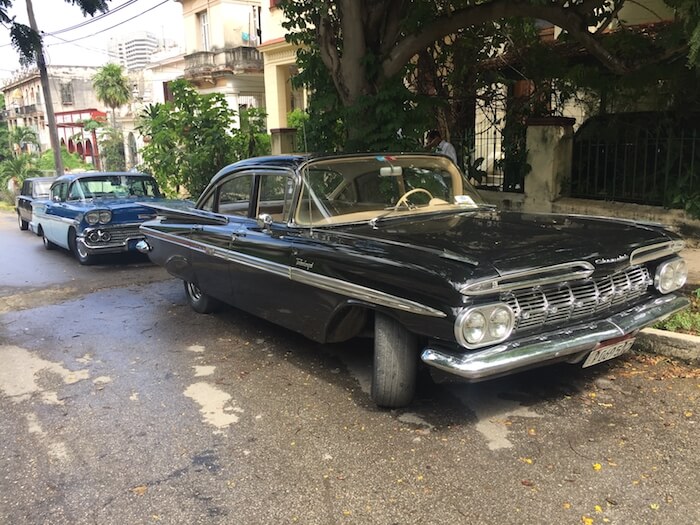
Cuba Itinerary Nostalgic Car
After the visit, Lydia drove us to Revolution Square and then down 5th Avenue, a boulevard lined with embassies on both sides. Lydia dropped us at the crafts market, a huge terminal space filled with craft vendors and artists by the waterfront. On our way back to our B&B, we stopped and had ice cream at Hotel Melia.
El Cocinero and the Cuban Art Factory
Dinner was at El Cocinero – the restaurant next to the Cuban Art Factory. The restaurant has Cuban fusion cuisine. It is in a really cool space with art installation, exposed brick, open air terrace and a smoke stack. It is in keeping with the essence of FAC (Fabrica de Arte Cubano) next door. FAC is a modern warehouse with installations, movies and live performances. It also has several bars. A local band did a cover of Adele’s Rolling in the Deep reggae style.
El Arca De Noe (Noah’s Ark Café) Café Dulceri
During a breakfast of sweets, we met with Monica and Elizabeth, the owners of El Arca De Noe (Noah’s Ark Café) Café Dulceria. El Arca is a bakery and coffee house (along Calle 23). The modern café has luscious tarts, brownies and cakes and is an oasis from the noise and heat of Havana.
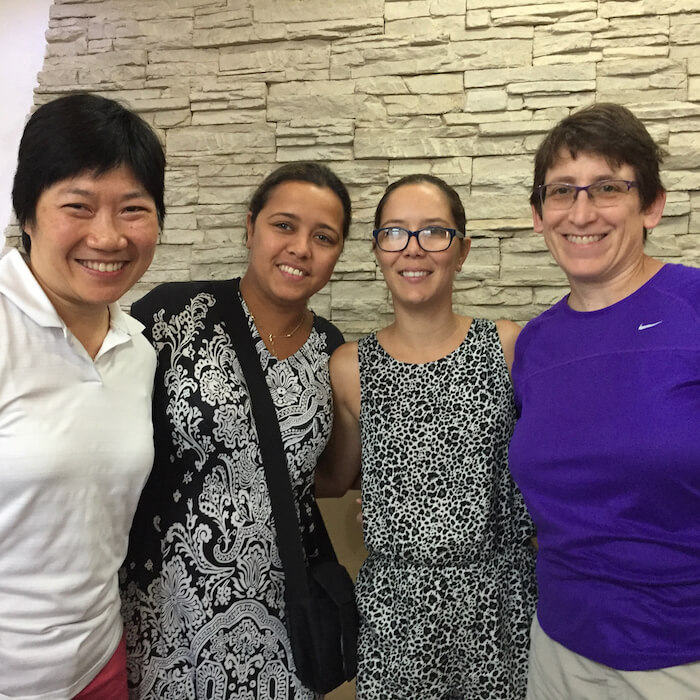
Monica & Elizabeth, Owners of El Arca De Noe and first lesbian couple to marry in Cuba
Elizabeth shared her family history in the business. Her grandfather was the first baker in the family. The women took over the business in 2010 and during the early days, they sold their cakes door to door. Eventually they were able to grow their business into a shop.
Monica and Elizabeth are one of the few women entrepreneurs in Cuba. Family and friends loaned them the money to start the business. They were the first lesbian couple to get married publicly in Cuba. They were very active with CENESEX for a while.
Cenesex
After breakfast we went to the Cuban National Center for Sex Education (Cenesex) to meet with the assistant director of the center. Mariela Castro, Raul Castro’s daughter, founded CENESEX. CENESEX is the official government organization in Cuba for sex education, LGBT rights and AIDs prevention.
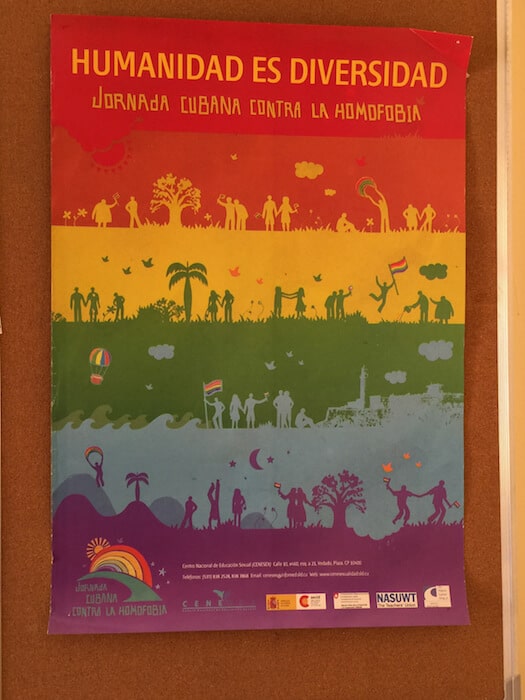
CENESEX anti-homophobia ad
They have run national anti-homophobia advertising campaigns and have had a major impact on LGBT rights in Cuba. They make a distinction between being against homophobia (which they are against) and being pro-gay (which they say they are not). It’s a nuanced postion and is mainly based ont he fact that they are not supportive of identity politics.
Cuba has a very conflicted history around gay rights. Before the revolution and after, the LGBTQ community was severly persecuted. Currently, discrimination based on sexual orientation and gender identity is illegal in Cuba. There is a Gay Pride Parade in Havana every May. In 2018, the National Assembly voted to legalize Gay marriage, but that has not been fully enacted. It was supposed to be in the new constitution, but was then removed.
CENESEX has done a number of public information campaigns to end homophobia. And we were glad to hear about that. Yet, lesbian and gay activists told us many stories of harrassment as they established the gay beach and other actions.
Havana Gay Beach Mi Cayito
After Cenesex, we drove to Old Havana to pick up Matt’s friends, Isel and Maria Julia, a couple who run a B&B in old Havana. Isel and Maria told us about the fight to establish Mi Cayito as a gay beach. A group of lesbians and gay men established the beach without support from the government. When the bridge and the bus broke down, they walked many kilometers to be there. The government refused to make repairs to the bridge and repeatedly put barriers in the way of them. They kept coming back until they won.
Pianist Marita Friedman and clarinetist Hector Herrera
One of the last things on our Cuba itinerary was visiting concert pianist Marita Friedman at her home. Marita performed beautiful Cuban classical music with clarinetist Hector Herrera. Coincidentally, we had seen Hector perform at Sala Jose White when we ducked out of the rain in Matanzas. Marita and her husband also shared with us the history of the Jewish community in Cuba.
After returning to Havana central, we visited the Christopher Columbus cemetery. We saw the elaborate tombs, including the grave of Amelia Goyri. Many Cubans believe that she grants wishes to women seeking to get pregnant.
Restaurante Nazdarovie
One of the most interesting lunch spots on our Cuba Itinerary was lunch at Restaurante Nazdarovie (Malecon #25, Havana), a soviet-style restaurant across from the malecon. The restaurant has colorful Soviet-era communist posters, a nice outdoor balcony with a view of the ocean and the old Morro fort. After lunch, we stopped by Restaurante Florita where the daiquiri was invented. We then took a bubble taxi to the Embassy of the United States. The Embassy used to blast ani-Castro messages from huge speakers. The Cuban government responded buy installing hundreds of flagpoles block out propaganda from the US.
La Guarida Paladar-Setting for Strawberry and Chocolate
Our final night’s dinner on our Cuba itinerary was at La Guarida Paladar, a restaurant housed in a multi-family building. Strawberry and Chocolate, the 1993 Oscar nominated film, was filmed there.
The Malecon
After dinner, the final item on our Cuba itinerary was partying on the malecon.
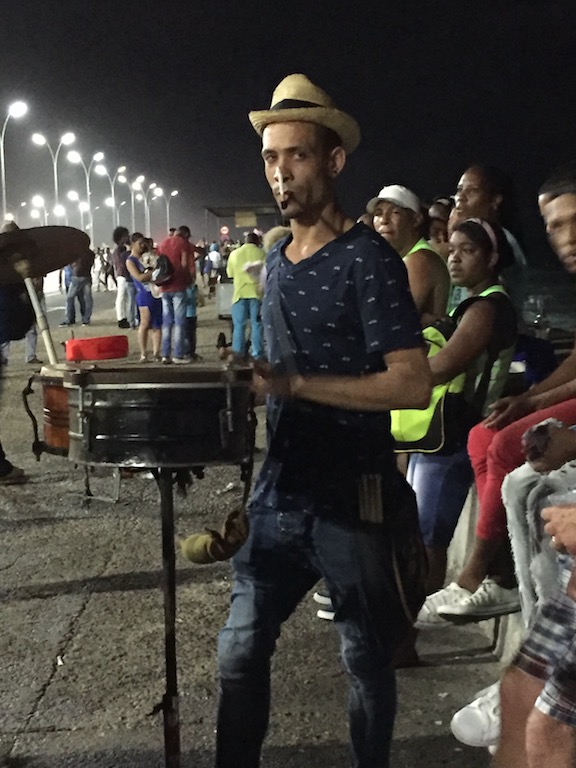
The Malecon where many Cubans go to party
The Malecon is where Cubans hang out and party. Local musicians performed for us until it started to rain. After dashing for cover, we decided it was time to turn in as we were leaving the next morning.
Tour Information
We went on this tour with Matt Smith from Detours with Matt. He arranged for a gay trip to Cuba. As clear from above, the trip also included experiences with performers and small business owners. Matt was a great host and planned a wonderful Cuba itinerary.
Cuba Travel for US Citizens
When we went to Cuba, the Obama administration visa and travel policies were still in place. Most particularly, independent travelers and groups were able to get people-to-people visas. Visas were easily obtainable at the airport prior to our flight.
Since then, President Trump has made it significantly harder for independent travelers to legally obtain visas. As of 2019, US citizens can only visit as part of an educaitonal tour and are not allowed to stay or shop in places that are owned by the Cuba government. Violations of these policies can result in a fine of up to $250,000 and 10 years in prison.
This post on Sant Clara tells more about Santa Clara.
Have you been to Cuba? Are you Interested in Going? Leave a Comment.
Please Pin and Share
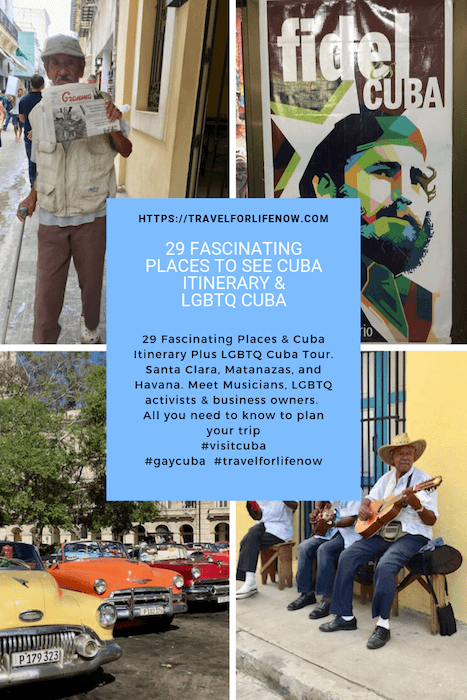
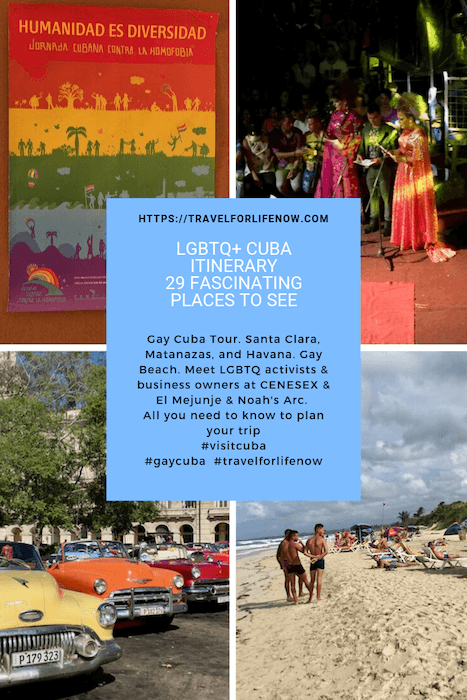
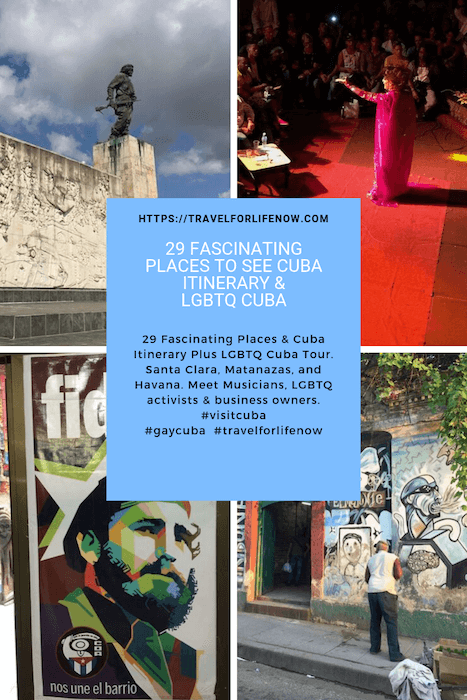
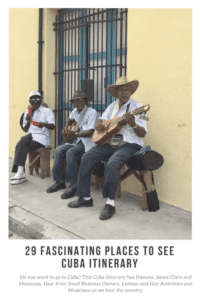
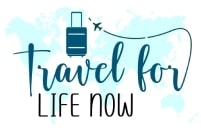
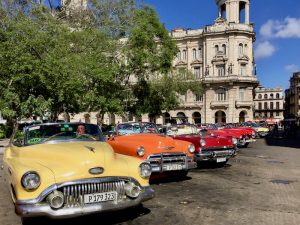
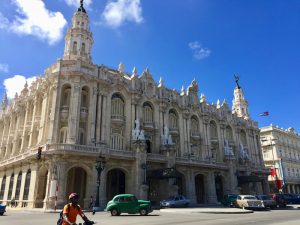
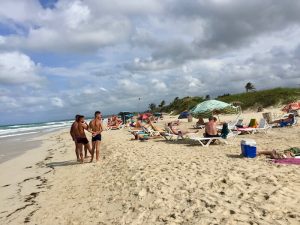
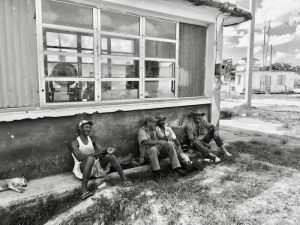
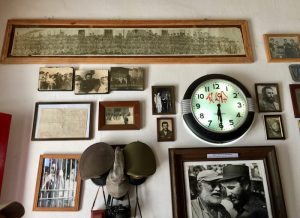
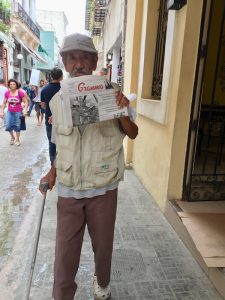
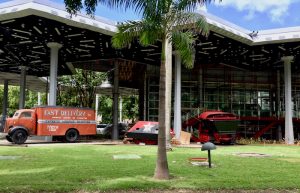
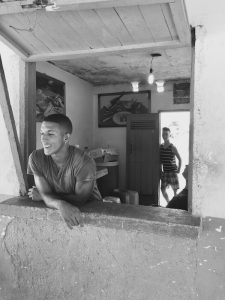
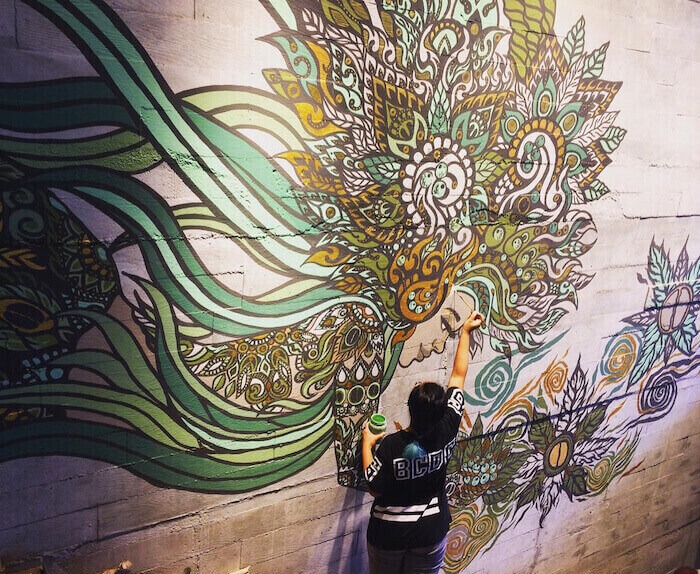
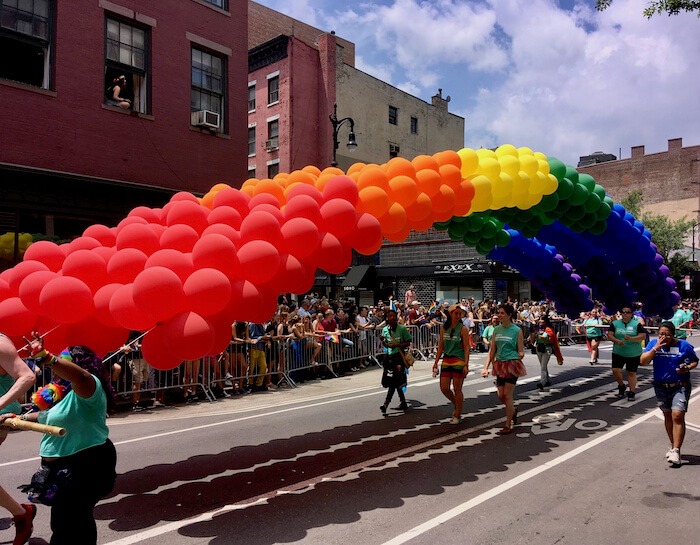
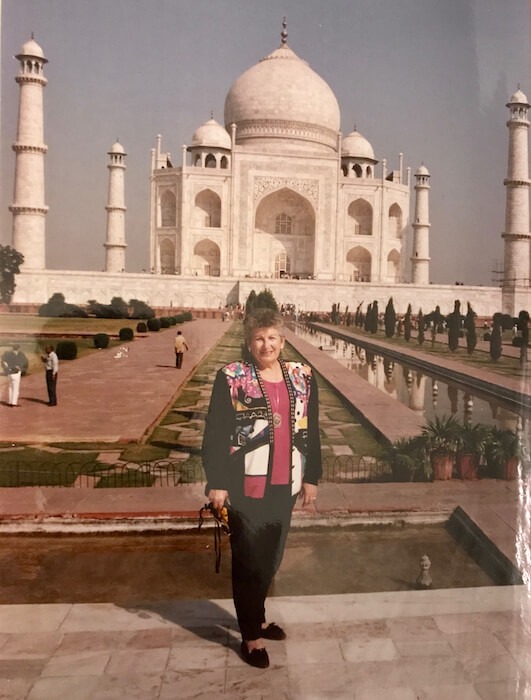
Thanks for sharing your itinerary, you covered so much!! I have been to Cuba once before and I would love to and am looking forward to spending more time there again soon.
Thanks
Thrilled to have this resource! We spent entirely too long in Havana and are dying to go back!
Thanks
What a fun trip! The food and culture sounds amazing and I am so glad that have some great options for the hay community as well. Such great tios.
Thanks
Sounds like a great trip! I’d love to go to Cuba but haven’t quite made it there. So many places I’d like to check out from this list!
Sounds fantastic! I’d love to visit Cuba – my boyfriend in particular is interested in the history – and this is a great to-do list for when I make it there. Thanks for sharing!
Great list! Like to see the number of awesome places our discovered on the island. Visiting from #BPS. Pinned and tweeted your post too.
Thanks!!
Thx for you comments. I enjoyed your post when I read it yesterday.
What a full and unique adventure. I love that you were able to visit so many different cultural places and homes too. Glad you had some AC and WiFi!
Thanks!
What a wonderful trip!